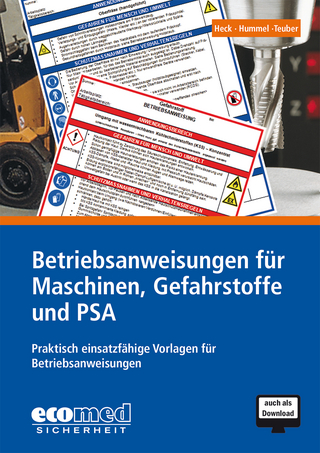
Guidelines for Initiating Events and Independent Protection Layers in Layer of Protection Analysis
Seiten
2015
John Wiley & Sons Inc (Hersteller)
978-1-118-94874-3 (ISBN)
John Wiley & Sons Inc (Hersteller)
978-1-118-94874-3 (ISBN)
- Keine Verlagsinformationen verfügbar
- Artikel merken
The book is a guide for Layers of Protection Analysis (LOPA) practitioners. It explains the onion skin model and in particular, how it relates to the use of LOPA and the need for non-safety instrumented independent protection layers. It provides specific guidance on Independent Protection Layers (IPLs) that are not Safety Instrumented Systems (SIS). Using the LOPA methodology, companies typically take credit for risk reductions accomplished through non-SIS alternatives; i.e. administrative procedures, equipment design, etc. It addresses issues such as how to ensure the effectiveness and maintain reliability for administrative controls or "inherently safer, passive" concepts. This book will address how the fields of Human Reliability Analysis, Fault Tree Analysis, Inherent Safety, Audits and Assessments, Maintenance, and Emergency Response relate to LOPA and SIS.
The book will separate IPL's into categories such as the following:
Inherent Safety
eliminates a scenario or fundamentally reduces a hazard
Preventive/Proactive
prevents initiating event from occurring such as enhanced maintenance
Preventive/Active
stops chain of events after initiating event occurs but before an incident has occurred such as high level in a tank shutting off the pump.
Mitigation (active or passive)
minimizes impact once an incident has occurred such as closing block valves once LEL is detected in the dike (active) or the dike preventing contamination of groundwater (passive).
The book will separate IPL's into categories such as the following:
Inherent Safety
eliminates a scenario or fundamentally reduces a hazard
Preventive/Proactive
prevents initiating event from occurring such as enhanced maintenance
Preventive/Active
stops chain of events after initiating event occurs but before an incident has occurred such as high level in a tank shutting off the pump.
Mitigation (active or passive)
minimizes impact once an incident has occurred such as closing block valves once LEL is detected in the dike (active) or the dike preventing contamination of groundwater (passive).
Since 1985, the Center for Chemical Process Safety (CCPS) has been the world leader in developing and disseminating information on process safety management and technology. CCPS, an industry technology alliance of the American Institute of Chemical Engineers (AIChE), has published over 80 books in its process safety guidelines and process safety concepts series, and over 100 training modules through its Safety in Chemical Engineering Education (SACHE) series.
| Erscheint lt. Verlag | 6.2.2015 |
|---|---|
| Verlagsort | New York |
| Sprache | englisch |
| Maße | 150 x 250 mm |
| Gewicht | 666 g |
| Themenwelt | Naturwissenschaften ► Chemie ► Technische Chemie |
| Technik ► Maschinenbau | |
| ISBN-10 | 1-118-94874-2 / 1118948742 |
| ISBN-13 | 978-1-118-94874-3 / 9781118948743 |
| Zustand | Neuware |
| Haben Sie eine Frage zum Produkt? |
Mehr entdecken
aus dem Bereich
aus dem Bereich
Software / Digital Media (2024)
ecomed-Storck GmbH (Hersteller)
299,99 €
